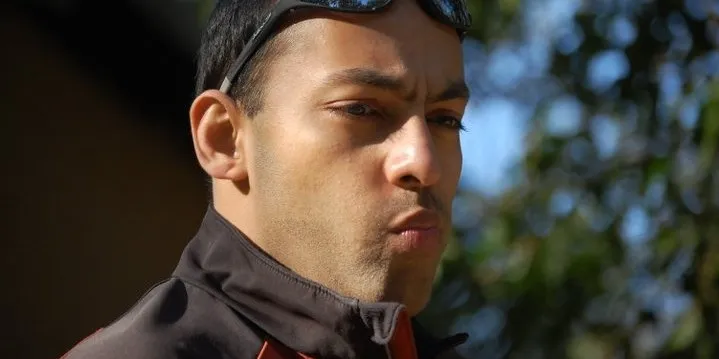Kicking ass and taking names: a book review (and then some) of Kashyap Deorah’s 'The Golden Tap'
Robert Shiller, the celebrated Yale economics professor, holds the rare distinction of publishing what is possibly the most prescient and well-timed book in recent memory. Irrational Exhuberance was published on 15th March 2000, just five days after the spectacular dot-com bust began; the book put forth several arguments laying out why the stock market was highly overvalued at the time. The market crash escalated dramatically in the following months and Shiller went on to be recognized as a predictive genius of sorts. The Golden Tap and its author Kashyap Deorah may just be the closest analog to this in the Indian startup ecosystem.

When I first heard of the book, I was sitting in the Investopad office in SDA Market. Rohan Malhotra, Investopad founder recommended the book highly. I thought the title sounded a bit kitschy, but the tag line “The Inside Story of Hyper-Funded Indian Startups” intrigued me. As someone who’d been in the thick of the startup ecosystem for 4 years, first as an early employee, then as a failed entrepreneur and now as a VC, I had a special penchant for “Inside Stories”. However, I remained skeptical about the book, as I was wary of it being nothing more than idle gossip and whispers heard in corridors.
What I got instead was an electrifying narrative that cut through the last 20 years of startup evolution in India like a surgical blade. I’ve rarely come across a writer that can weave so many strands together into a coherent narrative, let alone one that is also entertaining and insightful. In this book review, my sole objective will be to compel you, dear reader, to pick up a copy and read it. At the same time, I’ll share some stories of my own that corroborate the stand the author has taken on several issues. If you are a student of the Indian startup ecosystem, this book is part of the compulsory curriculum.
The book is structured in four parts that read in chronological order. The first part covers what Deorah calls “The Internet Wave” covers events that transpired from the birth of commerce Internet 1994 to the dot-com bust in 2002. The second part titled “The Globalization Wave” chronicles the recovery and subsequent bust in 2009. The third part chronicles recent events between 2010 and now, in what he calls “The Smartphone Wave”. Part four attempts to cast an eye on the future and lays out Deorah’s take on where the Indian startup system will go from here. To me, the book felt like an excellent four course meal, with Part 3 (which to me was the main course) serving as the most satisfying non-fiction read I’ve come across in a long time.
The Appetizer – a short history of the Internet pre-smartphones
The story begins in 1994 where Deorah after finishing his 10th boards was contemplating whether on not to write the JEE, while on the other side of the planet Marc Andreessen (Netscape), Jerry Yang (Yahoo) and Jeff Bezos (Amazon) were kicking off or about to kick off their respective companies that would go on to dominate the early days of the internet. The bulk of Part One outlines the story of two startups Junglee Corp. and RightHalf.com.
Junglee was founded by three enterprising Indian PhD students – Ashish Gupta, Anand Rajaraman, and Venky Harinarayan, along with a serial entrepreneur named Rakesh Mathur. The chapter tells the story of how these pioneers of Indian startups built Junglee as a “transaction search engine” which allowed users to look through classifieds and listing through a combination of filters, and in the end was acquired by Amazon.
All of the founders went on to build storied careers as entrepreneurs and venture capitalists. Ashish went on to found the VC firm Helion Venture Partners. Anand and Venky together started Cambrian Ventures and Kosmix. Rakesh Mathur founded and sold multiple companies and now runs a company called FlyWheel Software. I’d heard of all these people during my conversations with startup veterans who always held them in the highest regard. But reading their story helped me understand how they got there.
Around the same time Deorah and his batch-mates were blazing a trail of their own in the heydays of the dot-com boom. Between 1999 and 2002, Deorah (who also started TechFest – IIT Bombay’s inter-collegiate technical festival) was cooking up his first startup on campus and even managed to raise angel funding from Rakesh Mathur (one of Junglee’s co-founders). RightHalf then went through the now well-worn rollercoaster of emotions driven by founder squabbles and external market forces that only an entrepreneur can truly relate to. It was eventually acquired by Rakesh Mathur’s then company PurpleYogi, which in-turn went through chaos during the dot-com bust of 2001. Deorah’s runs us through these experiences with a flair for storytelling that is often missing when one speaks about their own failures.
As someone who’s been through the IIT system, albeit in Madras, the idea of someone starting both a technical festival and a funded startup on campus before either of these were even a “thing” gave me a deep appreciation for the magnitude of these achievements at such an early age. By the end of Part One, I was already a fan of Deorah, the student-entrepreneur.
Entrée – Tiger and the hedge fund’s this-of-that approach
Between January 2014 and September 2015, the goings on in the Indian startup ecosystem befuddled me to no end. I was struggling to keep my startup MagnetWorks afloat, just as the tsunami of funding for consumer mobile startups had begun. As an entrepreneur at the time, I was consumed by a blind rage at the investing community for backing yet another food-delivery company. While at the same time, going through frustration and depression at my own failures to raise funds for my startup in the manufacturing IoT space. My startup eventually shut down and I crossed over to the dark side to become a VC, but my rage and frustration still hadn’t found any answers. Until I read this chapter.
Deorah lays out the motivations of Tiger by explaining their roots as a hedge fund and then goes on to explain the multi-hundred million dollar rounds in cold-hard logic. The mistake everyone made was to view Tiger’s investments as VC investments, when in reality, they were nothing but trades that were executed from of a gigantic spread-sheet backed by extensive research. Tiger called it this-of-that investing. Where this was an established company in a developed market and that was it’s analog in an emerging market.
This exposition lays out a structural framework behind all that I had heard about Tiger and Lee Fixel from entrepreneurs that were backed by him. Lee moved fast. Lightning fast. A funding conversation with him usually lasted under an hour at the end of which he’d give you a half page term-sheet at an astronomical valuation, with a validity of 45 minutes. You had to say yes or no in that time. He wasn’t interested in board seats, rights or any of the other hoopla other VCs were so finicky about. He just wanted a lions (or Tiger’s?) share of your company and he wanted it right then and there.
The chapter also contains the story of Chaupaati Bazaar, a company that Deorah co-founded along with Zishaan Hayath, who is now one of India’s most prolific angels. Kishore Biyani’s Future Group eventually acquired Chaupaati. The story behind the origins of the startup and the acquisition conversation, which was conducted in Shudhh Bania-nese between Biyani and Deorah, makes for one of the more entertaining acquisition stories I’ve come across.
Main Course – Y U NO IPO? And other excesses from overfunding
As I mentioned earlier in this overly long book-review, Part 3 is where this book really comes into its own. If I had one takeaway from this book, it would be that Indian startups are yet to prove themselves in their ability to provide exits. Deorah points out a painful fact that very few investors are ready to acknowledge –Since the inception of tech startups in India, only 3 companies have really achieved an exit at scale. Makemytrip, JustDial, and Naukri. That’s it. Every other “exit” has been nothing more than an acquisition by a large privately held company (which is nothing more than investor money moving from the left pocket to the right pocket), or acqui-hires in the case of LittleEyeLabs by Facebook, and Zipdial by Twitter.
This, of course, has been driven by two factors: poor unit economics coupled with ridiculous valuations. Nobody says it better than Deorah in this telling paragraph on Flipkart:
“…Tiger planned to take Flipkart public in late 2015 or early 2015… targeted at $25 Billion. The last call for drinks (most recent funding round) was priced at $12.5 Billion giving them (investors) a generous 2X upside. From publicly available SEC data, in the year ending December 2014 (around the same time as Flipkart’s funding), Amazon posted revenues of $89 billion making about 2% per transaction and was valued at $140 billion. Similarly, JD.com from China posted revenues of $19 billion losing about 2% per transaction and was valued at $35 billion. Flipkart’s ACRA filings in Singapore revealed that they posted revenues of $450 million, losing over 30% per transaction and was funded at a valuation of $12.5 billion. In effect, Amazon and JD.com enjoyed a revenue multiple of 1.6 and 1.8 respectively while barely breaking even. Flipkart on the other hand, raised funding a revenue multiple of 28 while bleeding profusely…”
Ouch.
This paragraph made me wonder how they managed to raise so much funding in the first place. Deorah yet again delivered the answer in a chapter written in the form of a high-stakes poker game where the players included Tiger, Softbank and Alibaba. In 20 pages of poker analogies that made me want to learn the game, he elucidates the motivations of these big guns, while at the same time making one point very clear: The Indian startup ecosystem is owned and run by foreigners as a proxy war.
As the stakes were raised, angels and early stage investors got excited and paranoid in equal parts. Excited because these large funding rounds provided them with liquidity through secondary sales of shares during larger rounds. Paranoia was prevalent on two fronts: Firstly, the fact that Tiger and SoftBank kept writing increasingly smaller cheques with amazing speed meant that VCs were getting edged out, leading them to seek out seed stage deals; the FOMO (Fear Of Missing Out) was rampant. Secondly, most bets were made in businesses with awful unit economics. This meant that anyone who called these startups out on this, stood to face the wrath of these VCs.
In early October, I faced this situation myself when we at Aspada tweeted out a couple of links that pointed out the impending implosion of FoodTech. I instantly received messages from someone at a leading VC saying our comments were “not in good taste”. The inadvertent pun made me chuckle!
The chapter has several other gems along this theme and pulls no punches in holding everyone accountable. The media who for fear of losing advertising revenue blindly published and pushed funding announcements without any fact checks, were at the same time being coquettish about writing investigative journalism pieces that revealed the true picture behind the scenes. Ashish Mishra of 'Mint' and Jai Vardhan of 'YourStory' were two of the few notable exceptions.
It also contains the story of Chalo, Deorah’s third company, which was acquired by OpenTable and provides a first-hand view contrasting an Indian acquisition (Chaupaati by Future Group) with its Silicon Valley counterpart. Also featured is the only piece of gossip I could find in the book: Transcripts of the authors interactions with Rahul Yadav, which leaves very little to interpretation. For the startup gossip columnists, these pages are solid gold.
Desserts & conclusions
Deorah concludes the book on a philosophical note borrowing learnings from another favourite author of mine, Devdutt Pattanaik. He follows that with some business models that he believes would end up becoming “true Indian unicorns”. If I had any criticisms on the book, it would be that some of Deorah’s analogies in the chapter seem a tad contrived and that the business models he speaks of are not fleshed out enough. But this would be nitpicking. In a tour-de-force through the startup ecosystem Deorah, for me, has lived up to Anand Rajaraman’s tall claim: he truly is the Herodotus of the Indian startup ecosystem. Deorahji, as they say in IIT, “Feel aa gayi, boss!”







